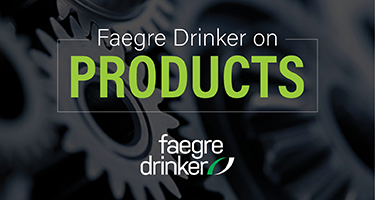A developing line of cases across the nation may have large implications for medical device manufacturers defending against failure-to-warn claims. While a treating physician’s failure to read or rely on the manufacturer’s warnings has historically been fatal to a failure-to-warn claim in many jurisdictions (at least those without a “read and heed” presumption), plaintiffs have tried novel “alternative avenues” arguments to make summary disposition of the claim more difficult.
There are two theories under which a failure-to-warn claim may be brought in the products liability context: a manufacturer with a duty to warn may breach its duty by either (1) failing to provide an adequate warning of the product’s potential risks (the “content theory”) or (2) failing to adequately communicate the warning to the ultimate consumer (the “communication theory”). Plaintiffs have traditionally pursued failure-to-warn claims in prescription medical device cases under the content theory, with most courts holding that a treating physician’s failure to read or rely on the manufacturer’s warnings in the product’s instruction for use (“IFU”) is fatal to the claim. See, e.g., Foster v. Ethicon, Inc., 2021 WL 1169473, at *7 (D.S.D. Mar. 26, 2021).
But a new trend may be gaining traction. Plaintiffs are increasingly relying on the communication theory in prescription medical device cases, arguing that manufacturers provide warnings through several mediums, i.e., alternative avenues, including “dear doctor” letters, product pamphlets, and sales representatives. When framed as an issue of communication, a physician’s failure to read and rely on the IFU is not necessarily dispositive. It is difficult to discern how successful this tactic has been overall, but at least some courts have entertained the argument, at least at the summary judgment stage. See In re Mentor Corp. Obtape Transobturator Sling Prods. Liab. Litig., 2015 WL 5139616 (M.D. Ga. Sept. 1, 2015) (denying summary judgment on failure-to-warn claim where the treating physician did not read the IFU or talk to a representative, but testified that he would not have implanted the product if defendant “had informed him of certain issues with the product”); In re Bard IVC Filters Prods. Liab. Litig., 2018 WL 1256768, at *3 (D. Ariz. Mar. 12, 2018) (“Given Plaintiffs’ claim that Bard breached its duty to warn by failing to adequately communicate warnings to physicians through means other than IFUs, the fact that Dr. Avino may not have read the Eclipse IFU is not dispositive on causation.”). These cases suggest that device manufacturers facing a failure-to-warn claim should be prepared to counter a communication-theory argument.
Fortunately, there are ways that a proactive manufacturer can counter plaintiffs’ attempts at proffering “alternative avenues” arguments. First, courts permitting failure-to-warn claims to proceed when the treating physician did not read or rely on the IFU are in the minority. See Foster, 2021 WL 1169473, at *7 (“The majority of courts . . . have held that when a physician fails to read or rely on a drug manufacturer’s warning, such failure constitutes the ‘intervening, independent, and sole proximate cause’ of the plaintiff’s injuries, even where the drug manufacturer’s warnings were inadequate.”). A defendant should therefore explain that a plaintiff’s “alternative avenues” argument is a minority position that the court should reject.
Second, defendants should argue that the communication theory is inapplicable to prescription medical device cases. This argument is more intuitive than it may seem at first blush: prescription medical devices—and their accompanying warnings—are heavily regulated, and physicians know (or should know) where the device’s warnings are located, i.e., the IFU. If the physician knows where a device’s warnings are located, there should be no communication issue; the failure to read the warning, not the warning itself, is the legal cause of the alleged injury. This argument is bolstered by the learned intermediary doctrine, which has been adopted in some form by nearly every jurisdiction in the United States. Various rationales are offered for the doctrine, but the common thread is that physicians are assumed to have assessed the risks and benefits of the device in light of the individual patient’s needs (ostensibly by reading the device’s IFU) before prescribing the device to and/or implanting the device into the patient.
These arguments, however, require a defendant to be proactive to develop a case that the physician relied exclusively on his or her knowledge, training, and experience. The depositions of the sales representative and the treating physician provide fertile ground for bolstering the defense to any “alternative avenue” arguments. For example, asking the physician where he or she expects to find written warnings for a medical device can help bolster an argument that physicians know precisely where to locate warnings for medical devices. Questions may also be asked about what other written information the physician recalls seeing or reviewing prior to implantation of the product. As with the IFU, it is unlikely the physician will recall reviewing any specific documentation. Conducting an interview of the sales representative will likely provide insight into what discussion or information was exchanged. Further, in cases where plaintiffs are alleging that the manufacturer should have provided warnings through sales representatives, asking the physician (1) whether sales representatives have any medical training and (2) whether the physician typically relies on the representations of laypersons in making medical decisions may provide effective ammunition in countering plaintiffs’ narratives.
Only time will tell whether the “alternative avenues” argument gains more traction. But manufacturers should be aware of the argument, and counsel should take steps to ensure the argument doesn’t permit an otherwise meritless failure-to-warn claim to proceed to trial.
The material contained in this communication is informational, general in nature and does not constitute legal advice. The material contained in this communication should not be relied upon or used without consulting a lawyer to consider your specific circumstances. This communication was published on the date specified and may not include any changes in the topics, laws, rules or regulations covered. Receipt of this communication does not establish an attorney-client relationship. In some jurisdictions, this communication may be considered attorney advertising.

